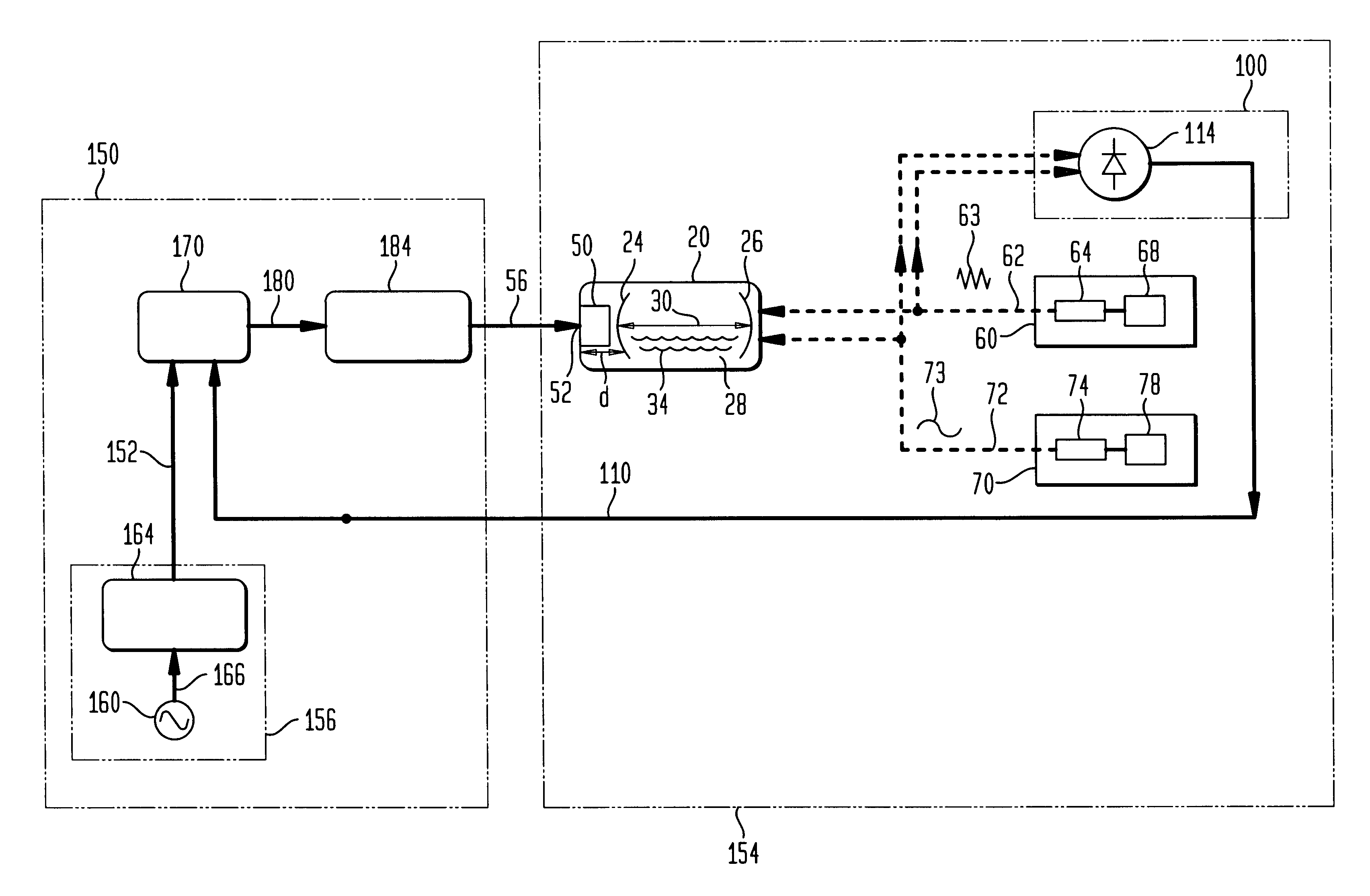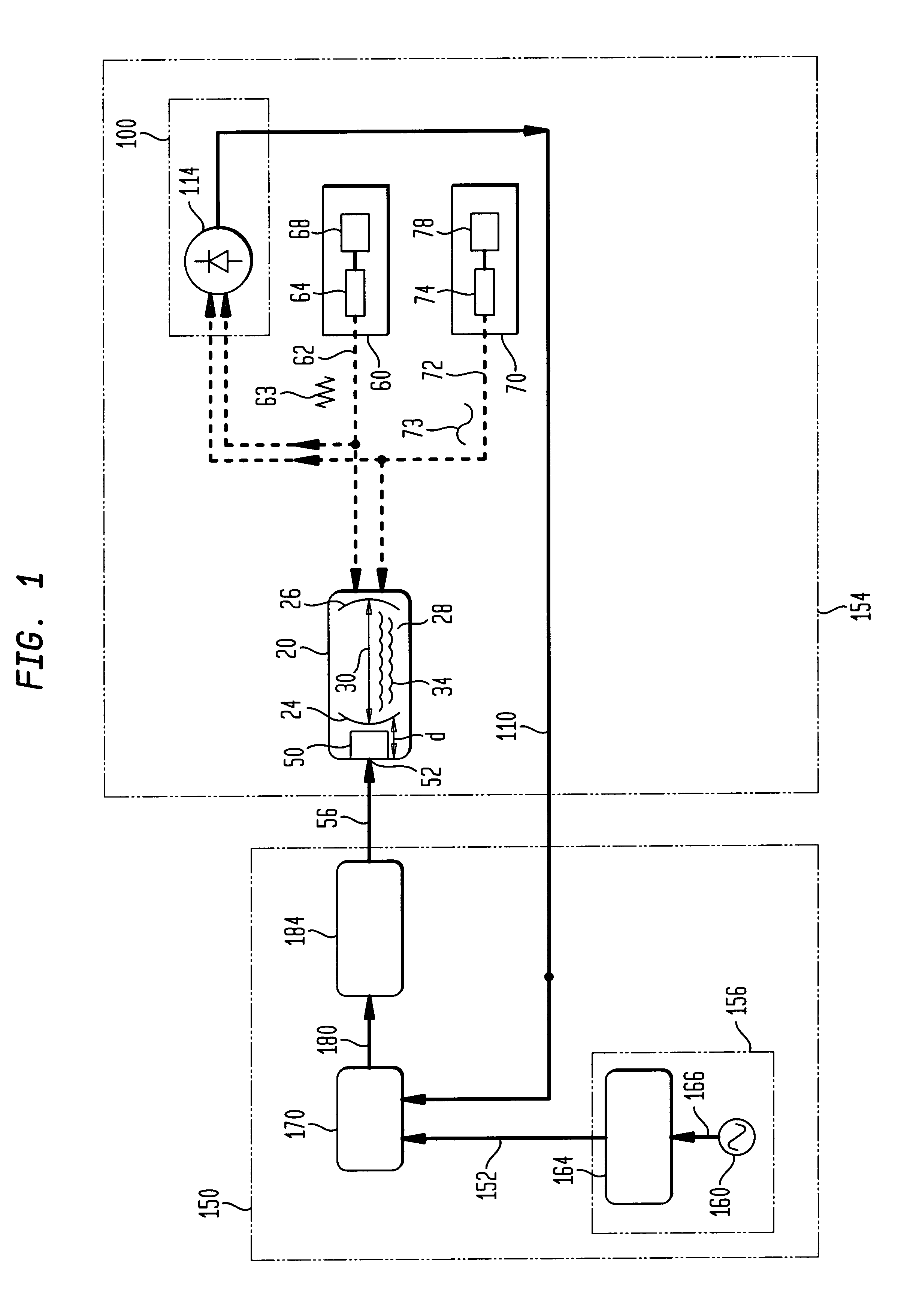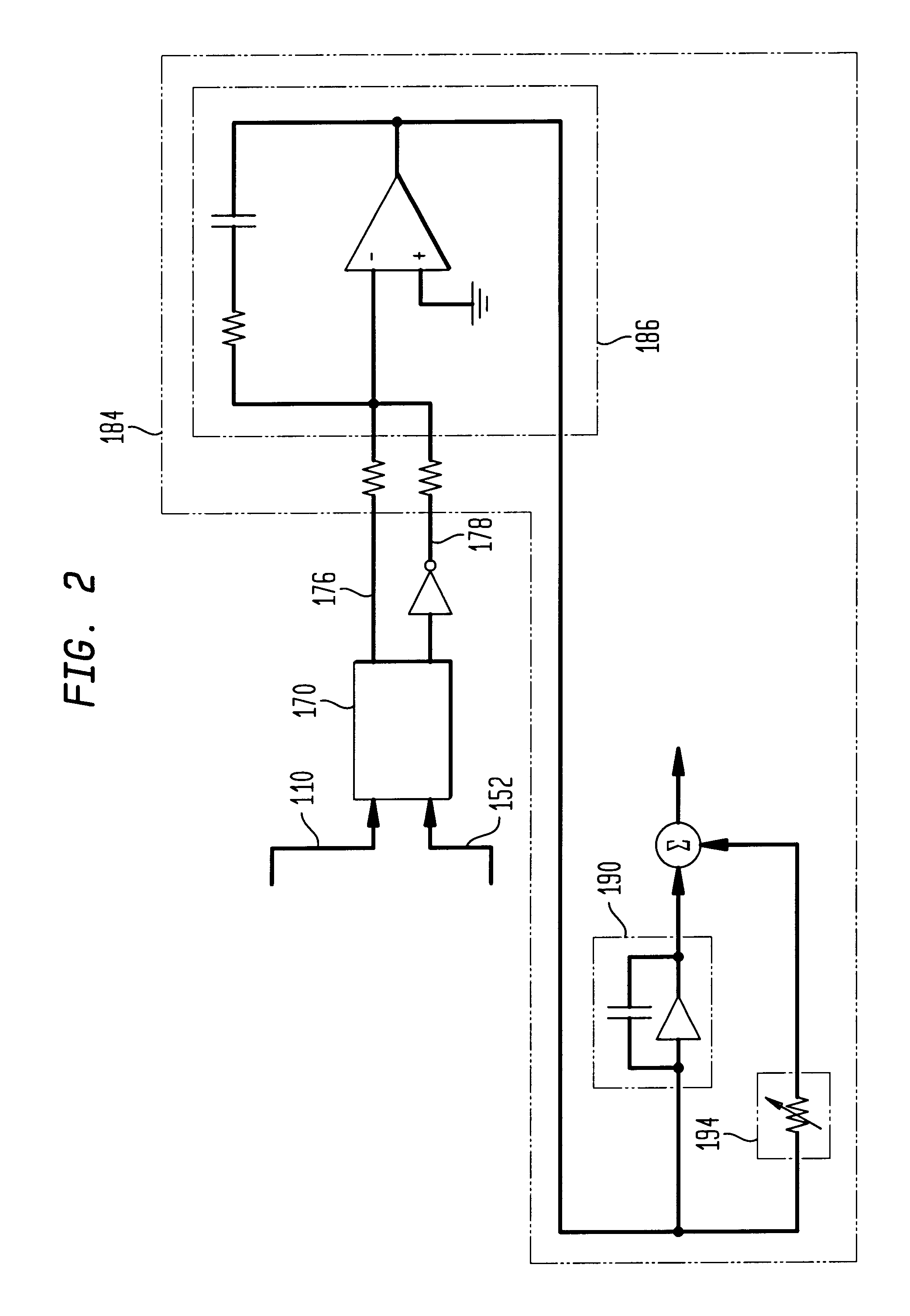Apparatus and method for laser frequency control
a laser frequency control and apparatus technology, applied in the direction of laser details, electrical apparatus, semiconductor lasers, etc., can solve the problems of laser approach limited, gas cell not rugged, and need for gas cell and the corresponding limit on achievable linewidth using practical gas pressure and temperatur
- Summary
- Abstract
- Description
- Claims
- Application Information
AI Technical Summary
Benefits of technology
Problems solved by technology
Method used
Image
Examples
Embodiment Construction
FIG. 1 shows block diagram of a laser frequency control and stabilization apparatus according to one preferred embodiment of the invention. The laser apparatus includes tunable optical resonator 20, which may be a Fabry-Perot interferometer, an etalon, a ring resonator or other suitable optical cavity. Optical resonator 20 may be made of glass or other material having a low coefficient of thermal expression.
In the preferred embodiment shown in FIG. 1, optical resonator 20 includes two highly reflective mirrors 24 and 26 mounted at either end of an internal optical cavity 28 of the resonator. The mirrors are chosen to be highly reflective such that the finesse of the optical resonator is large, typically greater than 5,000 and preferably greater than 80,000, making the optical resonator a low loss system. The optical resonator preferably has a relatively short optical length 30 for compact applications. Optical length 30 is determined by the distance traveled by a light beam propagat...
PUM
 Login to View More
Login to View More Abstract
Description
Claims
Application Information
 Login to View More
Login to View More - R&D
- Intellectual Property
- Life Sciences
- Materials
- Tech Scout
- Unparalleled Data Quality
- Higher Quality Content
- 60% Fewer Hallucinations
Browse by: Latest US Patents, China's latest patents, Technical Efficacy Thesaurus, Application Domain, Technology Topic, Popular Technical Reports.
© 2025 PatSnap. All rights reserved.Legal|Privacy policy|Modern Slavery Act Transparency Statement|Sitemap|About US| Contact US: help@patsnap.com



